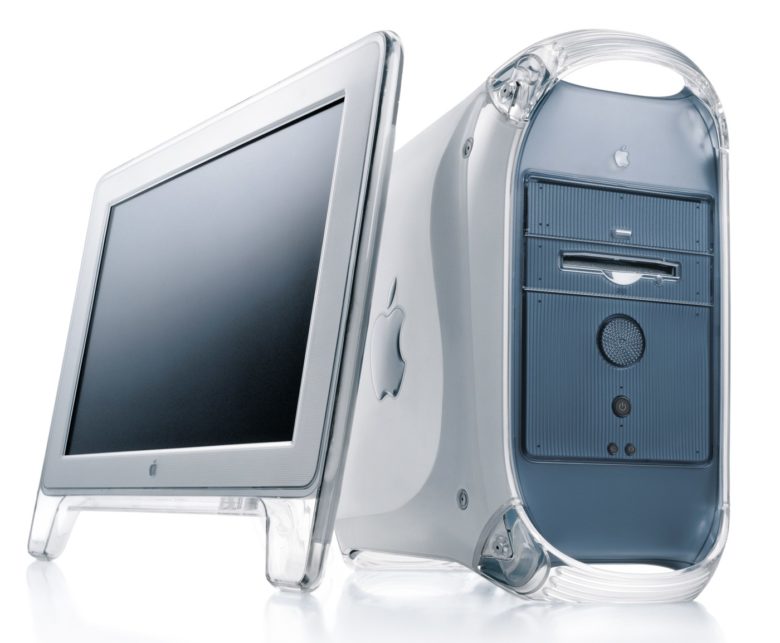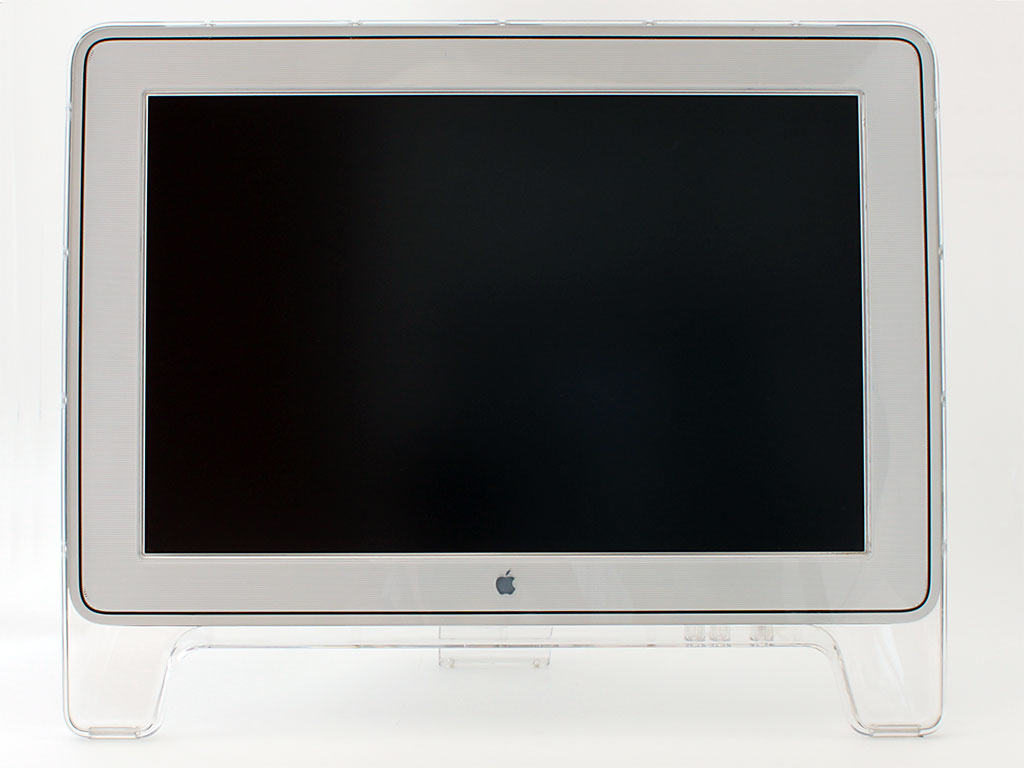 December 29, 1999: Apple starts shipping its unfathomably large 22-inch Cinema Display.
December 29, 1999: Apple starts shipping its unfathomably large 22-inch Cinema Display.
The biggest LCD computer display available anywhere, Apple’s all-digital flat panel is a far cry from the bulky cathode ray tube monitor of the popular iMac G3, which took the world by storm the previous year. It is also Apple’s first widescreen display — and the first to sport a digital video interface.
The Cinema Display: Apple’s best monitor yet
“This is the display we’ve all dreamed about for 20 years,” said Steve Jobs, Apple’s interim CEO, at the time. “The Apple Cinema Display is without a doubt the largest, the most advanced and the most beautiful LCD display ever offered.”
Aside from its size and shape, what was so dazzling about Apple’s $3,999 Cinema Display was its thinness and vibrancy. Thinness is something we now associate with Apple design. It’s easy to take for granted after years of slim iPhones, iPads and MacBooks.
However, when the Cinema Display shipped, Apple hadn’t yet gotten around to its obsession with anorexic computers. As a result, the existence of a flat-panel monitor seemed astonishing.
Thin is in, but CRTs aren’t going anywhere for the time being
Elsewhere, Apple continued building CRT monitors until 2006 — when it shipped its last CRT Mac — and average users didn’t get flat-panel LCD displays until the iMac G4 in 2002.
For one with a screen close to the size of the Cinema Display, they had to wait until November 2003. That’s when Apple debuted the 20-inch iMac G4, its biggest flat-panel, all-in-one computer yet. Even then, it couldn’t quite match the 22-inch Cinema Display’s size.
Apple Cinema Display specs: 16:9 aspect ratio, 1600×1024 resolution

Photo: Apple
In terms of vibrancy, the display’s LCD colors popped in a way that they hadn’t on CRTs. It featured a 16:9 aspect ratio and a display resolution of 1600×1024.
The goal? Appeal to high-end graphics professionals and creatives, who had remained loyal (if frustrated) Apple users during the previous decade.
Perfect companion for the Power Mac G4 line
With that in mind, Apple designed the Cinema Display to work with the high-end Power Mac G4 line. That computer offered better graphics performance and other advanced features for power users. Apple’s targeting of those in the creative industries was subtly made clear through the Cinema Display design, which incorporated a stand reminiscent of a painter’s easel.
Calling the screen a Cinema Display also pointed toward a direction Apple was just starting to explore: the computer as entertainment hub. That same year, Apple launched its movie trailer website, apple.com/trailers, which let users watch movie trailers at an unparalleled quality. It would be a few more years before Apple started letting users download movies through the iTunes Store. But the Cinema Display helped make this service compelling.
Thunderbolt Display arrives in 2011, followed by Pro Display XDR and Apple Studio Display
Apple continued to be excited about the Cinema Display for the next decade. The displays got larger and larger, eventually topping out at 30 inches. The company eventually discontinued the line in 2011, replacing it with the Thunderbolt Display, which it stopped making in 2016.
That wasn’t the end of Cupertino’s dabbling in displays, though. Apple launched the high-end Pro Display XDR in 2019. With a 32-inch Retina 6K screen and a $4,999 price tag, it’s definitely aimed at professionals. (An optional Pro Display XDR stands adds $999 to the price.) While the Pro Display XDR picked up awards, it remains out of reach of average consumers.
The Apple Studio Display — a high-end monitor that costs “just” $1,599 — arrived in March 2022 alongside the Mac Studio desktop. This midrange hardware barrage offered increased performance at more affordable prices than Apple’s pro desktop lineup.
Apple Cinema Display’s design legacy
Still, decades after its launch, the Cinema Display’s legacy can be seen by looking at any iMac. Despite several redesigns — the most recent coming in April 2021 — the popular all-in-one computer carries the same widescreen, flat-panel design that Apple introduced back in 1999.
Did you own an Apple Cinema Display? What is your favorite Apple monitor of all time? Leave your comments below.


